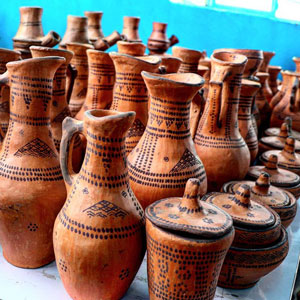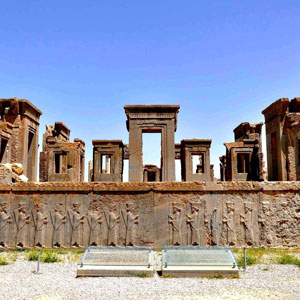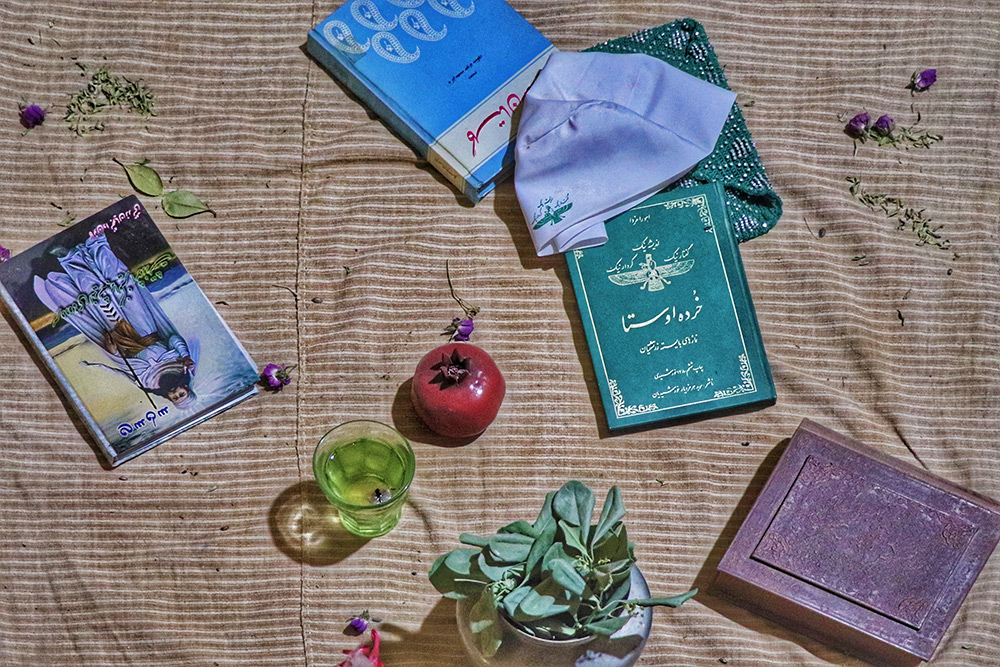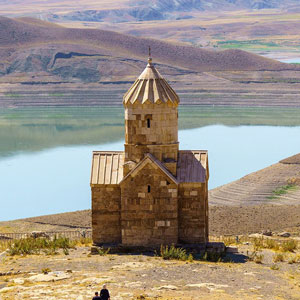 Signin with Google
Signin with Google Signin with Facebook
Signin with Facebook
 Culture,History
Culture,HistoryZoroastrianism, the Oldest Monotheist Religion of Iran

Zoroastrianism
“Heaven” and “Hell”, resurrection day, “Angel” and “Demon”! Be they just mindsets or actual realities, have they ever stimulated your sense of curiosity to look for the origins of these concepts? Well if the answer is yes, then your answer lies in this story. When talking about a religion the mind must be open to receive. The historical, cultural and social significance of Zoroastrianism has brought us here to scrutinize it a little in order to get acquainted with it.
Zoroastrianism is basically a way of life and thinking. A path in which you’ll learn the distinctive meanings of “goodness” and “evil”, and so their evident yet strict teachings and instructions on how to be a better version of yourself. As one of the oldest active religions in history, Zoroastrianism is the religion of “Monotheism”, based on “Good Thoughts”, “Good Words” and “Good Deeds”, a religion brought by Zoroaster the Prophet.

Who is Zoroaster? Myth or reality
Zoroaster is the initiator of the Zoroastrian religion, a person whom his name is the only remnant of the religion and cogitation of the ancient Indo-European nations. Zoroaster’s teachings which were rooted in ancient Persia were the modified versions of the religions and beliefs that existed before him.
The exact advent date of Zoroaster is not known and neither is his advent place. Many surmises have been circulating around his approximate era and place of advent, in various written Zoroastrian textbooks. Considering Alexander’s era, a time origin, some date Zoroaster back to 300 years before Alexander. Yet in some other books, they place him at a time around 600 BCE. Meanwhile, there are people who call him a myth.
Regarding his location, they either say he belongs to a place called “Iran-Vij” or current Azerbaijan, where there is a Zoroastrian temple or a place in central Asia. Some researchers believe the Sistan and Baluchistan region is the birthplace of Zoroaster somewhere close to Lake Hamun.
So, when it comes to the existence of Zoroaster, myth and reality merge. If it weren’t for the sayings of “Gathas”, we might have missed our chances to get in touch with his beautiful mind.
Nowadays, Yazd and Kerman Provinces host the largest community of Zoroastrians in Iran and in some cities like Taft they live peacefully along with their Muslim, Christian and Jewish neighbours. the ancient legacy of this religion has impacted other parts of the Iranian Plateau such as the Kurdish event of Pir Shalyar in the World Heritage site of Uramanat region.
Zoroastrianism’s Worldview
Zoroastrianism is a “Monotheistic” religion. A faith in which they only worship one god, the Ahura Mazda, the “God of Goodness” and the five elements of water, fire, soil, wind and the sun. Ahura Mazda, the wise master, the creator of both the darkness and light, is the “Ultimate Good” constantly fighting with the “Devil” whom he always wins over. In Zoroastrianism, the world is the battlefield between the good and the bad, where the good always stands versus the evil. Only we should choose which side we are on.
In the book of Gathas, “Protecting life” is the “Holy principle”. Thus, “Good” is in “Wisdom & Good Thoughts”, whereas an act of killing is considered “Evil”. Even at times of inevitability and desperation, when there’s no way but to take human lives, they are reminded of “Sheep” an all-time symbol of “Goodness” in Zoroastrian faith.
Gathas and Avesta, treasures of Zoroastrians
“Gathas” is the book of Zoroaster consisting of 17 Avestan hymns. They are believed to have been composed by Zarathustra himself; therefore it forms the foundation of Zoroastrianism. This book is basically the core of Zoroastrian liturgy, which is still cited to.
Avesta, the holy book of Zoroastrians, is written in the Avestan language, a language limited to the book, Zoroastrian priests and its followers. Avestan language a relative to the ancient Achaemenid language, have quite a lot of similarities to the Sanskrit language. Teachings and instructions of Avesta have been gathered in a “word-of-the-mouth” manner and have been completed and revolutionized in the course of many years, adhering to the teachings of Gathas. In the present day, we can see the modernized versions of the old teachings.
Zoroastrianism, a wisdom-based religion, advises the general population and “Moghs” (its followers) to remember these three important principles: “Good Thoughts”, “Good Words” and “Good Deeds” and make them the epigraph of their lives. As, irrespective of our ethnicity, social level, family and wealth we are identified by our thoughts and actions and God is the final judge.

If you look into the religious history of Iran, you’ll always find traces of Zoroastrianism. Especially during the Achaemenid era, wherein their inscriptions refer to Ahura Mazda as the creator of the earth, the sky, the people, and it was him who chose Cyrus the Great to be the king of Persia. The greatness of Ahura Mazda, the importance of happiness, believing in Anahita the goddess of water and Mithra the goddess of love, are some of the common beliefs between the Achaemenids and the Zoroastrians. But even so, the Achaemenids burial ceremony has left their religious identity in a shadow of a doubt.
Following Alexander’s invasion and an era of Zoroastrianism silence, and during the Parthian empire, they started to build fire temples in an attempt to revive the old Zoroastrian flame. It was during the Sassanid era when Zoroastrianism entered an era of rejuvenation. It became the official religion of the people of Persia, the Zoroastrian society grew bigger than ever and the Azar-Goshnasb fire temple located in today Takab region became of high importance.
Subsequent to the Arab invasion and the fall of the Sassanid Empire, most of the Zoroastrian population first fled to Khorasan and then left for Gujarat in India. Where they have been called the “Parsis”. Perhaps, Indians wearing white during their burial ceremonies indirectly refers to the Zoroastrian mourning ritual.
Zoroastrianism in the modern age
Zoroastrianism not only is still alive among the Zoroastrian population in Iran but in fact, it is taken very seriously. So much that they have their own calendar with the Avestan name of days, hold their Zoroastrian rituals and perform their religious and moral responsibilities exactly in accordance with Zoroastrian ancient teachings and instructions. All in all, Zoroastrianism is a religion of purity!
By Sara Kheirdoust / TasteIran

